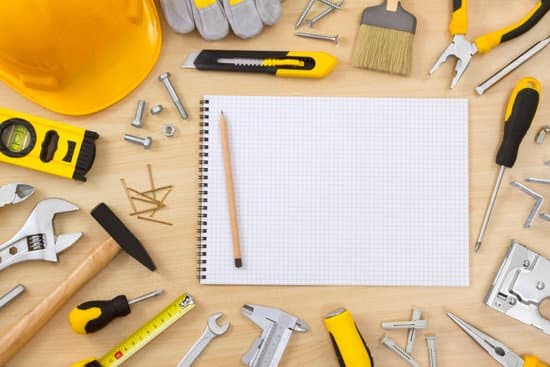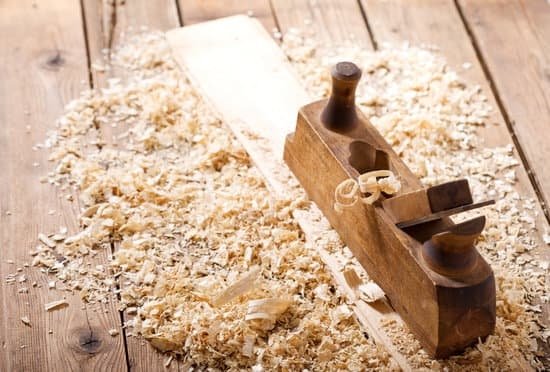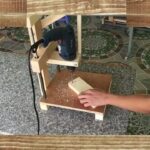What are the machines used in woodworking industry? The woodworking industry has a rich history and plays a significant role in creating an array of products from furniture to construction materials. One of the key aspects of the woodworking industry is the use of machinery, which has greatly improved the efficiency and precision of woodwork. In this article, we will explore the various types of machines used in woodworking and their importance in shaping the future of this industry.
The use of machinery has revolutionized the woodworking industry, making it possible to mass-produce high-quality wood products with greater accuracy and speed. From power tools to CNC machines, each type of equipment serves a specific purpose in the wood crafting process. Understanding these machines and their functions is essential for anyone involved in woodworking or interested in learning more about this craft.
In the following sections, we will delve into the different categories of woodworking machines, including power tools, wood cutting machines, wood shaping machines, wood finishing machines, CNC machines, as well as safety measures when using these devices. Additionally, we will explore future advancements in woodworking machinery technology and its potential impact on the industry. Join us as we take a closer look at how these machines have shaped and continue to shape the art and science of working with wood.
Types of Woodworking Machines
Woodworking machines play a crucial role in the woodworking industry, allowing for efficient and precise fabrication of wood materials. There are various types of machines used in this industry, each serving a specific purpose. Understanding the different categories of woodworking machines is essential for professionals and enthusiasts alike.
Wood Cutting Machines
One of the most fundamental types of woodworking machines is wood cutting machines, which are designed to accurately and efficiently cut raw wood materials into the desired shapes and sizes. Table saws, band saws, and circular saws are common examples of machines used for this purpose. These machines are essential for creating straight cuts, curved cuts, and intricate designs in woodwork projects. The technology behind these machines continues to advance, allowing for enhanced precision and safety in wood cutting processes.
Wood Shaping Machines
In addition to cutting, shaping wood is an integral part of woodworking projects. Wood shaping machines such as planers, jointers, and routers are utilized to create smooth surfaces, straight edges, and complex profiles on wooden pieces. These machines offer versatility in shaping different types of wood for various applications. With advancements in technology, modern wood shaping machines provide exceptional accuracy and efficiency in achieving desired shapes and textures.
Wood Finishing Machines
Once the wood has been cut and shaped to the required specifications, it undergoes a finishing process using specialized machines such as sanders and polishers. These machines are crucial for achieving a refined surface texture and appearance on the final product. Sanders remove imperfections on the wood surface while polishers enhance its luster. Wood finishing machines contribute significantly to the overall quality of woodworking projects.
Understanding the diverse functions of woodworking machines is essential for individuals involved in this industry or those with an interest in woodworking. From cutting to shaping to finishing, these machines have transformed the woodworking process by providing precision, efficiency, and consistency in fabricating wood materials. As technology continues to evolve, so too will these woodworking machines, further enhancing their capabilities and expanding creative possibilities within the industry.
Power Tools in Woodworking
Woodworking industry heavily relies on a variety of machines and tools to shape, cut, and finish wood. One of the key components in this process is the use of power tools. Power tools play a crucial role in making woodworking tasks more efficient and precise. Some commonly used power tools in the woodworking industry include:
- Circular saws: These handheld power saws are essential for making straight cuts in wood. They are versatile and can be used for cross-cutting, ripping, or beveling wood.
- Drills: Woodworkers use hand drills or powered drills to create holes for screws, fasteners, or dowels. They come in different sizes and types, including corded and cordless options.
- Sanders: Sanding is an integral part of woodworking to achieve smooth and polished surfaces. Belt sanders, random orbit sanders, and palm sanders are among the popular choices for woodworkers.
Power tools are essential in speeding up the woodworking process while ensuring precision and accuracy in creating wooden products. The use of these tools efficiently prepares the wood for cutting, shaping, and finishing processes.
Another important aspect of power tools is their ability to provide versatility in woodworking tasks. By using a combination of different power tools, woodworkers can achieve various designs and finishes on their projects. Whether it’s creating intricate details with a router or achieving smooth edges with a sander, power tools offer flexibility in woodworking techniques.
Furthermore, the advancement of technology has led to the development of more powerful and efficient power tools that cater to the diverse needs of woodworkers. From compact designs for portability to high-powered motors for heavy-duty tasks, these technological advancements continue to enhance the capabilities of power tools in woodworking industry.
Wood Cutting Machines
Table Saws
One of the most commonly used wood cutting machines is the table saw. This powerful machine consists of a circular blade mounted on an arbor and driven by an electric motor. Table saws are designed for making straight cuts in wood, and they can be adjusted to different angles for bevel cuts as well. Their versatility and accuracy make them indispensable in woodworking workshops.
Band Saws
Band saws are another type of wood cutting machine that uses a long, continuous band of toothed metal stretched between two or more wheels to cut material. These machines are ideal for curved or irregular shaped cuts in wood, providing greater flexibility compared to table saws. With their ability to make intricate and precise cuts, band saws are essential for creating detailed designs in woodworking projects.
Woodworkers rely on these machines not only for their precision but also for their efficiency in handling large volumes of wood cutting tasks. By utilizing these innovative tools, craftsmen can produce high-quality wooden products with a level of precision that would be difficult to achieve through manual labor alone.
Wood Shaping Machines
In the woodworking industry, wood shaping machines play a crucial role in transforming raw wood into intricately designed and precisely crafted pieces. These machines, including planers, jointers, and routers, are essential for achieving the desired shapes and dimensions of wood products.
Planers are used to create smooth and uniform surfaces on wooden boards, while jointers are designed to straighten the edges of boards for seamless joining. Routers, on the other hand, are versatile tools that can be used for various shaping tasks such as creating intricate patterns and profiles on wood.
One of the key advantages of wood shaping machines is their ability to provide accuracy and consistency in shaping wood. These machines allow woodworkers to achieve precise measurements and smooth finishes, resulting in high-quality end products. Additionally, the versatility of these machines enables woodworkers to explore different design possibilities and create unique custom pieces according to their clients’ specific requirements.
When it comes to efficiency in woodworking operations, wood shaping machines significantly contribute to streamlining the production process. Instead of manually shaping each piece of wood, these machines can perform tasks faster and with greater precision, ultimately increasing productivity in the workshop. It’s no wonder that wood shaping machines have become indispensable tools for woodworking professionals seeking to deliver top-notch craftsmanship in their work.
Overall, the use of wood shaping machines has revolutionized the woodworking industry by providing efficient and accurate methods for shaping and customizing wooden materials. As technology continues to advance, we can expect further innovations in wood shaping machinery that will continue to enhance the capabilities of woodworking professionals and shape the future of this industry.
Wood Finishing Machines
Sanders are essential in the woodworking process as they are used to remove any imperfections or roughness from the surface of the wood. There are different types of sanders available, including belt sanders, orbital sanders, and disc sanders, each with its specific purpose and application. On the other hand, polishers are used to achieve a sleek and polished finish on the wood surface, enhancing its overall appearance.
In addition to preparing the wood surface for final touches, wood finishing machines also contribute to increasing efficiency in production processes. The use of these machines allows for a smoother workflow by reducing manual labor and expediting the finishing phase. Furthermore, wood finishing machines aid in achieving consistency and precision in the final product, leading to customer satisfaction and a positive reputation for woodworking businesses.
| Wood Finishing Machine | Description |
|---|---|
| Belt Sander | Used for rapid material removal on large surfaces |
| Orbital Sander | Ideal for smoothing and fine finishing on smaller areas |
| Polisher | Designed to give a high-gloss finish on various types of wood |
CNC Machines in Woodworking
CNC machines have revolutionized the woodworking industry with their precision, efficiency, and ability to create intricate designs. These computer-controlled machines are used for a variety of woodworking tasks, including cutting, carving, and milling wood to precise specifications. CNC routers, mills, and lathes are some of the most common types of CNC machines used in woodworking.
One of the key advantages of using CNC machines in woodworking is the level of accuracy they offer. With traditional manual methods, human error can lead to inconsistencies in woodwork. However, CNC machines ensure that each piece is cut or carved with exact precision, resulting in high-quality finished products. This precision is particularly valuable for custom woodworking projects where intricate designs are required.
In addition to accuracy, CNC machines also offer the benefit of increased production efficiency. With computer programming controlling the movements of the machine, large volumes of work can be completed in a relatively short amount of time compared to manual labor. This not only speeds up production but also allows for greater consistency across multiple pieces of woodwork.
| CNC Machine | Function |
|---|---|
| CNC Router | Used for cutting and carving wood with precise detail and complex shapes. |
| CNC Milling Machine | Utilized for creating flat or curved surfaces on wooden pieces through rotary cutting tools. |
| CNC Lathe | Mainly used for shaping wood by rotating it while a cutting tool is applied to the material. |
Safety Measures in Using Woodworking Machines
In the woodworking industry, safety is a top priority when using machinery. It is crucial for workers to be aware of the potential hazards and risks associated with operating woodworking machines. One of the key safety measures is ensuring that all individuals using the machines are properly trained and knowledgeable about their function and operation.
This includes understanding how to safely use, maintain, and troubleshoot the equipment. Additionally, proper personal protective equipment (PPE) such as goggles, gloves, and ear protection should be worn to prevent accidents and injuries.
Furthermore, it is essential to keep the work area clean and free from clutter to avoid tripping hazards or other obstructions that could lead to accidents. Machines should also be regularly inspected for any signs of wear or damage, and maintenance schedules should be strictly followed to ensure that they are in good working condition. Additionally, woodworking machines should only be operated by individuals who are focused and alert, as distractions can increase the risk of accidents.
Another important safety measure in using woodworking machines is following proper procedures for tool usage. This includes knowing how to safely feed material into cutting or shaping machines, as well as understanding the correct way to handle power tools such as saws and drills.
It is also crucial for individuals to be aware of emergency shutdown procedures in case of unforeseen circumstances. By adhering to these safety measures, workers can minimize the risk of accidents and create a safer environment within the woodworking industry.
Future of Woodworking Machinery
The future of woodworking machinery is an exciting topic that showcases the potential for innovation and advancement in the industry. As technology continues to evolve, so does the potential for more efficient, precise, and sustainable woodworking machines. With the increasing demand for custom and high-quality wood products, manufacturers are constantly developing new machinery to meet these needs.
One significant trend in the future of woodworking machinery is the integration of automation and digitalization. This includes the use of advanced robotics and artificial intelligence to streamline production processes, reduce human error, and increase overall efficiency. Additionally, the implementation of smart technologies allows for real-time monitoring and data analysis to optimize machine performance and resource utilization.
Another aspect of the future of woodworking machinery is the emphasis on sustainability and environmental responsibility. As concerns about deforestation and climate change continue to rise, there is a growing focus on using eco-friendly materials and energy-efficient practices in woodworking. This has led to research and development of machines that minimize waste, reduce energy consumption, and promote sustainable forestry practices.
Conclusion
In conclusion, the woodworking industry heavily relies on a wide variety of machines and tools to produce high-quality wood products. From power tools for cutting, shaping, and finishing to advanced CNC machines for precision work, the use of machinery has revolutionized the woodworking process. This article has provided an overview of the different types of machines used in woodworking, emphasizing their importance and significance in shaping the future of the industry.
One cannot underestimate the impact that woodworking machines have had on the efficiency and precision of woodwork. The use of power tools such as saws, drills, and sanders streamlines the cutting and shaping process, while wood cutting machines like table saws and band saws ensure accuracy and speed.
Wood shaping machines such as planers, jointers, and routers offer versatility and enhance the craftsmanship of wood products. Additionally, wood finishing machines play a crucial role in achieving a polished and professional look for final products.
Looking ahead, it is clear that advancements in woodworking machinery technology will continue to drive innovation in the industry. The integration of CNC machines for intricate designs and precise production reflects an exciting future for woodworking. However, it is important to remember that safety measures must always be followed when using these powerful tools. Overall, with ongoing advancements in technology and machinery design, the future of woodworking looks promising and full of potential for further growth and development.
Frequently Asked Questions
What Machinery Is Used in Woodworking?
Machinery used in woodworking includes table saws, band saws, planers, jointers, routers, and sanders. These machines are essential for cutting, shaping, and smoothing wood to create various wood products.
What Is the Most Popular Machine in a Woodworking Shop?
The most popular machine in a woodworking shop is the table saw. It is a versatile tool that can be used for a wide range of cutting tasks, making it an essential piece of equipment for any woodworker.
What Is the Most Versatile Woodworking Machine?
The most versatile woodworking machine is the combination machine, which typically includes a table saw, jointer, planer, and sometimes other functions like sanding or shaping. This all-in-one machine saves space and offers multiple functions for different woodworking tasks.

Hi everyone! I’m a woodworker and blogger, and this is my woodworking blog. In my blog, I share tips and tricks for woodworkers of all skill levels, as well as project ideas that you can try yourself.





